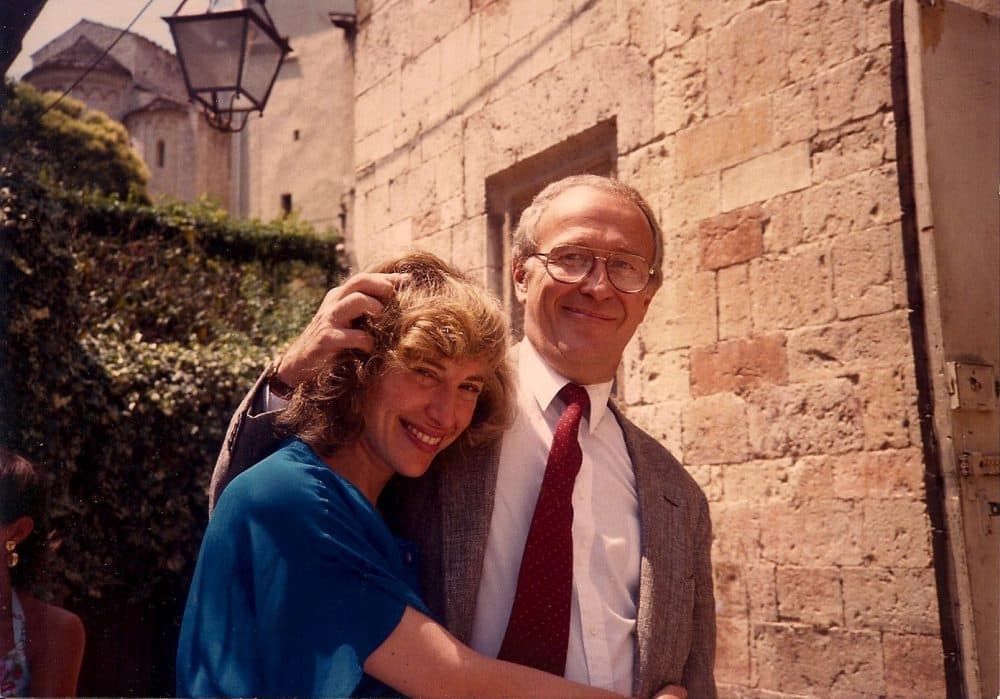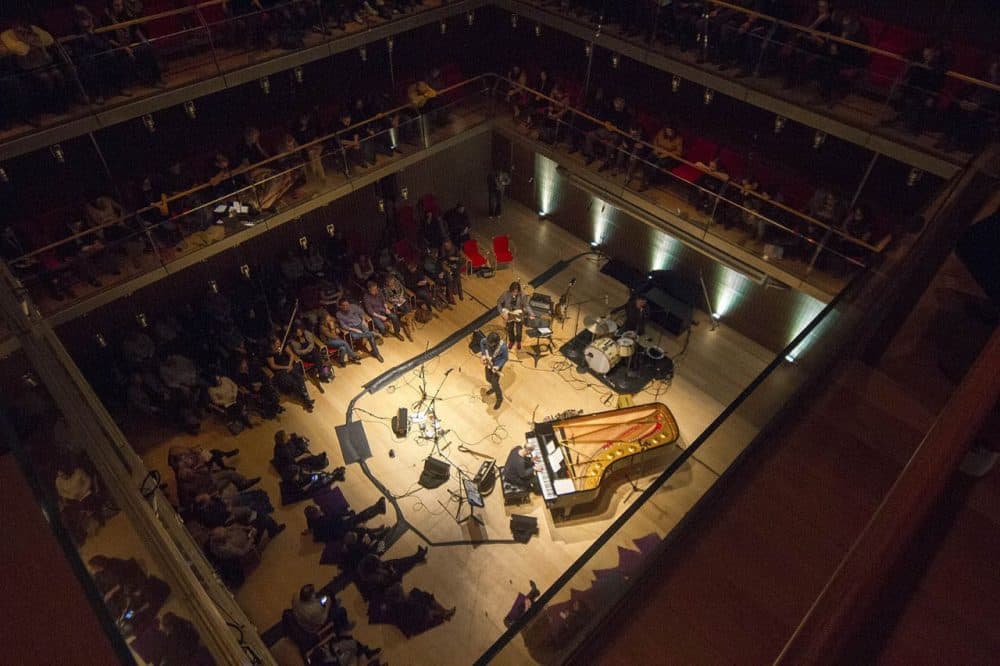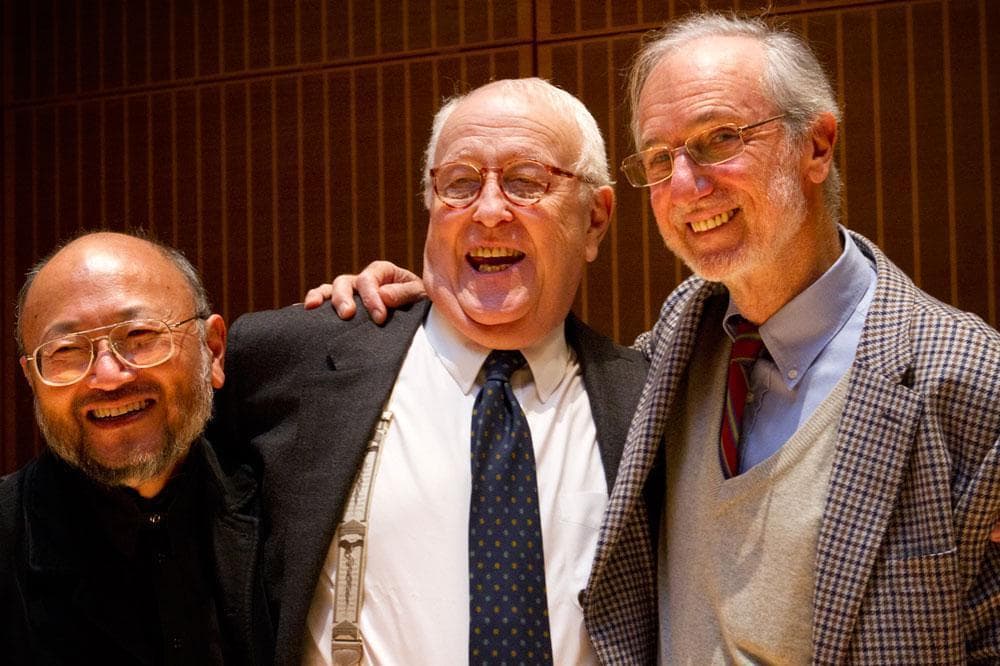Advertisement
Beloved Gardner Museum music curator Scott Nickrenz dies at 87

The music community in Boston and beyond is mourning the loss of a passionate, energetic pioneer named Scott Nickrenz. The 87-year-old died on Monday, March 17.
Nickrenz's lengthy resume includes helping to launch the careers of musicians like violinist Joshua Bell and overseeing the concert programming at the Isabella Stewart Gardner Museum for 26 years. During his tenure as curator of music, Nickrenz was the driving force behind the creation of a stunning, acoustically pristine concert hall.
On the eve of his retirement from the museum in 2017, Nickrenz sat in the Gardner’s box-shaped Calderwood Hall and reflected on why it was intertwined with his legacy. “It’s like my whole life, my whole career was aiming for the 'sonic cube," he said. “I'm so proud of it.”
Nickrenz’s lifelong musical journey began in Buffalo, New York. As a child prodigy he played piano first, then violin. Relaying details from a biography that his wife Paula Robison and their daughter Erika Nickrenz wrote together, Gardner museum director emeritus Anne Hawley shared that Nickrenz’s teacher Alexander Schneider "took one look at his large hands and shouted, 'Switch to the viola!'"
Nickrenz did just that, and attended the Curtis Institute of Music in Philadelphia on scholarship. He went on to become a fellow at Tanglewood in the Berkshires where he worked with legends including Elliott Carter, Leon Kirchner, Gunther Schuller, John Cage and Aaron Copland. The violist performed around the world and at venues including Lincoln Center, the White House, Tanglewood and Jordan Hall. Nickrenz co-founded the Lenox String Quartet, the Orpheus Trio and the Vermeer Quartet.

In 1975 he became the director of chamber music at the Brooklyn Academy of Music and stayed for 13 years. He also directed chamber music concerts with his future wife, flutist Paula Robison, at the Spoleto music festivals in Italy, Charleston, South Carolina and Melbourne, Australia between 1978 and 2003. Nickrenz was the chamber music director for the New World Symphony in Miami, and on faculty at the New England Conservatory. His list of affiliations and accomplishments goes on.
Along the way, Nickrenz worked with a slew of musicians, including cellist Yo-Yo Ma during a summer session at Harvard University. In an interview before Nickrenz retired from the Gardner in 2017, Hawley said it was Ma who recommended Nickrenz to her for the museum’s curator of music position. In 1990, she had her first encounter with Nickrenz’s indomitable spirit.
“It’s just infectious,” Hawley said. “He’s skipping on the earth, and you just always want to follow him.”
Advertisement
At the Gardner, Nickrenz quickly got to work opening the door for others. “Scott took a historic music program at the Gardner and just made it into a major showcase for presenting and developing young talent, young musicians,” Hawley said.
Nickrenz had a pool of talent he knew personally at his fingertips, including Nicholas Kitchen of the now internationally renowned Borromeo String Quartet. The violinist said the music curator embraced the belief that talent needs to be encouraged, challenged and shared with the public. Kitchen added that Nickrenz “often saw it very early on, when maybe even other people didn’t see it.”
“One of the reasons I'm useful on this earth is I spend my life helping people younger than me,” Nickrenz told this reporter in 2017. “I mean it's just so consistent through all of these festivals and all of these things. It's the most consistent thing in my life.”
Borromeo became one of the museum's resident music ensembles. For years its musicians performed in the historic palazzo's gorgeous but acoustically-limited Tapestry Room. When it came time to design the Gardner's new expansion to the original building, Nickrenz knew he wanted to create an innovative concert hall that didn't have a stage.

Hawley said Nickrenz was always driven to find ways to engage more intimately with contemporary audiences and pointed to “The Concert,” his pioneering podcast. “So he’s used technology to further classical music,” Hawley said. “He’s developed young talent.” She added Nickrenz made its Sunday classical performance series a “national treasure.” He also played a role in nurturing the museum's pop and hip-hop concert program "Rise."
But Hawley believes history will likely remember Nickrenz best for his role in shaping Calderwood Hall. Acclaimed architect Renzo Piano was hired to design it as part of the museum’s extension that debuted in 2012. Nickrenz’s goal with the concert space was to break down barriers.
“Scott wanted the musicians and the audience to experience the music together,” Hawley said. “So he proposed 'a sonic cube with the players placed at the center and the listeners surrounding them all four sides.'”
Piano set out to understand that concept more deeply, and asked the acclaimed Japanese acoustician Yasuhisa Toyota to explain the science behind how sound works. Toyota replied, "Sound goes up!" According to Hawley, the architect immediately envisioned a cube to realize Nickrenz’s dream. “This collaboration gave birth to one of the most unusual and beloved concert halls in the world,” she said.

Hawley described Nickrenz’s final days as being filled with outpourings of love from around the world. Cellist Yo-Yo Ma played Bach at his longtime friend and colleague’s bedside; violinist Joshua Bell Facetimed Nickrenz from Rome; and pianist Jean-Yves Thibaudet performed music by Liszt.
In her own remembrance of Nickrenz, Hawley said, "Just before Scott closed his eyes for the last time, a message arrived." It was from Renzo Piano, who wrote: “Dear Scott, my friend...Music is our world, music is our life. But YOU are real MUSIC.”
Hawley said she will miss sitting next to Nickrenz at the Gardner's Sunday concerts. "Listening with him and noticing when a phrase, an interpretation, a note particularly moved him. I always felt the music was flowing through his body. Our shared passion for music made life transcendent."
She'll also miss his outrageous behavior that made her laugh, and how Nickrenz's boundless imagination birthed experimental collaborations between contemporary musicians and art. For example, he commissioned composer David Lang to write 8-minute operas for each of the five tapestries in the museum’s tapestry gallery that depicted moments from the life of Cyrus the Great. "They were full of stories with deceptions, beheadings and affairs," Hawley said. "Visitors could listen to them on their cellphones."
Nickrenz also loved cigars, martinis, poker and tennis (he was a New York State champion in high school). He died in Boston after a recent onset of acute myeloid leukemia. According to Hawley, the consummate music man will be forever missed by his wife, flutist Paula Robison, and his daughters: pianist Erika Nickrenz and psychologist and singer-songwriter Elizabeth Nickrenz Fein. Nickrenz is also survived by his sister Nola Allen and grandson Zachary Herman.
This article was originally published on March 20, 2025.
